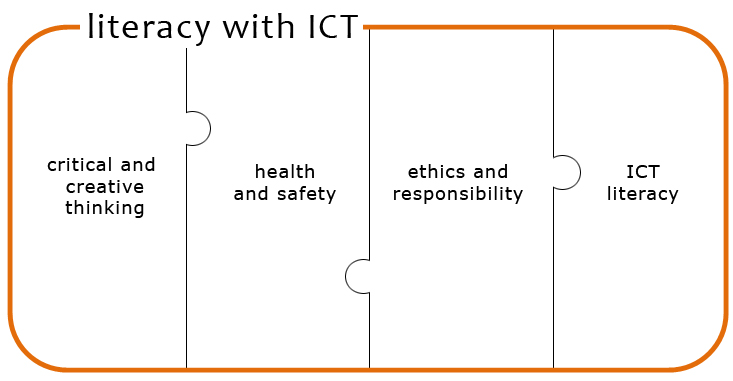

Definition and Purpose

What is Literacy?
Literacy is the ability to identify, understand, interpret, create, communicate, compute and use printed and written materials associated with varying contexts. Literacy involves a continuum of learning to enable an individual to achieve his or her goals, to develop his or her knowledge and potential, and to participate fully in the wider society. – UNESCO
The meaning of literacy evolves with the times. Literacy is not only about reading, writing, listening, speaking, viewing and representing. It is also about developing literacy with information and communication technology (ICT).
What is Information and Communication Technology (ICT)?
Information and communication technologies include computers, laptops, digital cameras, video cameras, digital microscopes, scanners, cell phones, electronic games, digital audio devices, global positioning systems, electronic whiteboards, the Internet, et cetera. ICTs in the classroom will continue to evolve as new technologies emerge over time.
What is Literacy with ICT?
Literacy with Information and Communication Technology (LwICT) means thinking critically and creatively, about information and about communication, as citizens of the global community, while using ICT safely, responsibly and ethically.

This representation shows the relationship between ICT literacy (i.e., demonstrating ICT skills) and literacy with ICT (i.e., thinking critically and creatively, about information and communication, as citizens of the global community, while using ICT safely, responsibly and ethically). ICT literacy is a critical component of literacy with ICT, but it is not sufficient in itself.
How do Students Develop ICT Literacy?

Literate students support their critical and creative thinking about textual, numerical, visual, and aural information as they choose and use ICT, safely, responsibly and ethically. They develop this literacy across the curriculum, through inquiry, as they
- question and plan
- gather and make sense
- produce to show understanding
- communicate
- reflect on their learning
What is a Developmental Learning Continuum?
A developmental learning continuum is an assessment tool for based on teacher observations. It describes what teachers see and hear students doing, as they demonstrate their literacy. Many teachers already use continuums for assessing learning in reading, writing and numeracy.
What is the Developmental Continuum for Literacy with ICT Across the Curriculum?
The Developmental Continuum for Literacy with ICT paints a picture of how students develop their critical and creative thinking, in curricular context as they use ICT safely, responsibly and ethically.
Why Develop a Continuum?
- The Developmental Continuum for Literacy with ICT is congruent with and infused with existing concepts across the curriculum; ICT is not a separate “curriculum” in K–12,
- the focus is on what students can do; learners of any age are able to find themselves on the continuum, from novices to experts, from pre-K students to Senior Years students and beyond.
- continuums are focused on the student; the Developmental Continuum for Literacy with ICT provides a vehicle for students to self-assess and set goals for their learning.